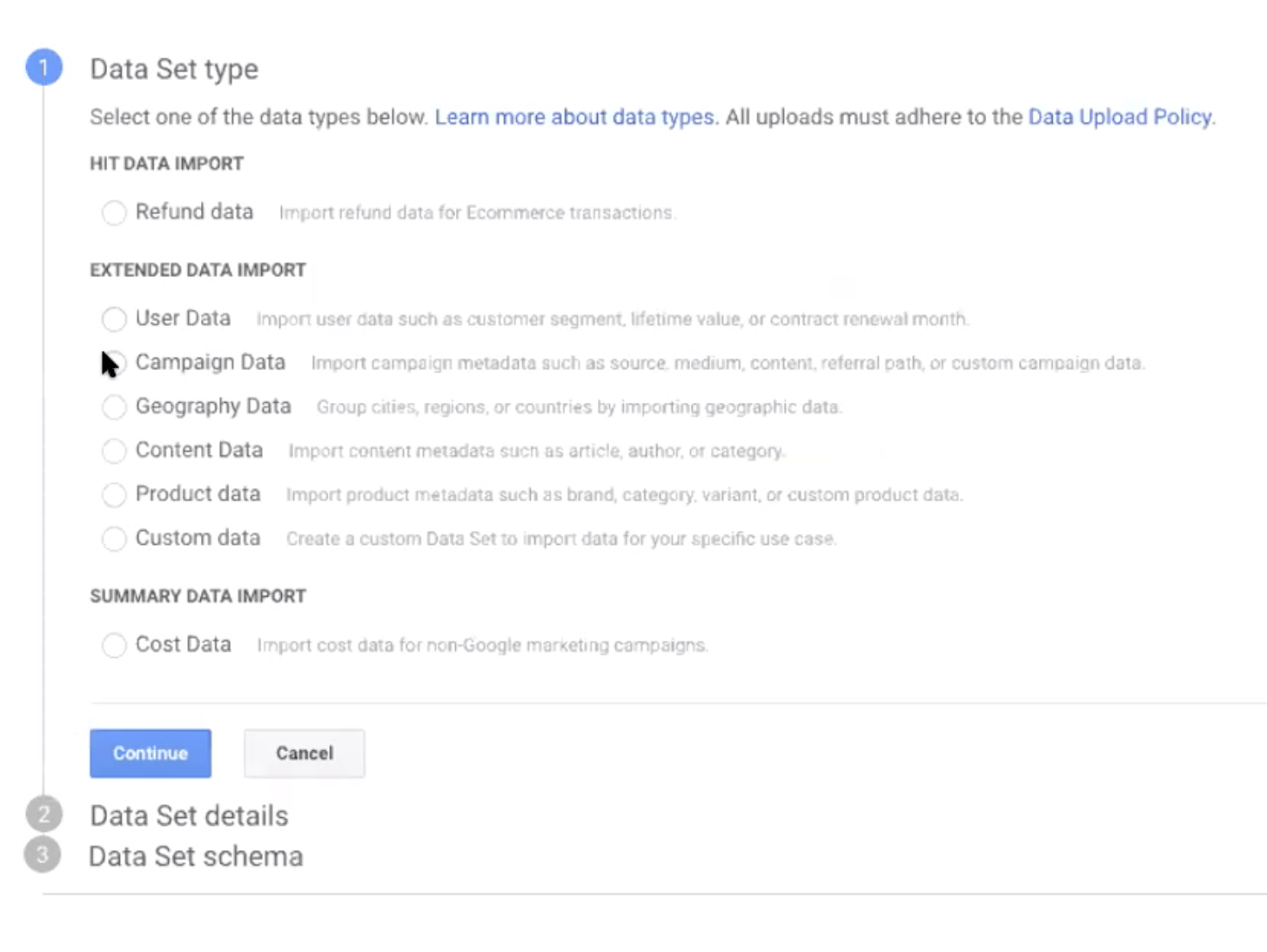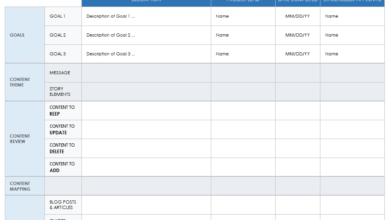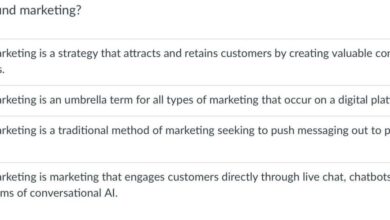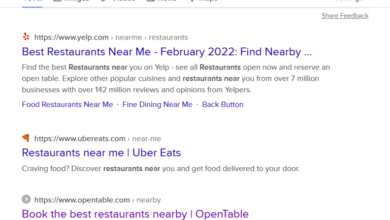
Tracking Code Marketing Explained A Deep Dive
Tracking code marketing explained is crucial for any digital marketer. It’s the invisible engine powering your campaigns, meticulously tracking user interactions and providing invaluable data for optimization. Understanding how tracking code functions, the different types, implementation, and key metrics is essential for achieving marketing success. This guide will break down the complexities of tracking code, offering practical insights and strategies to maximize your campaign performance.
This in-depth exploration will cover everything from basic concepts and different types of tracking codes to advanced techniques and best practices. We’ll delve into the implementation process, crucial metrics, and troubleshooting common issues. Case studies will illustrate real-world applications and demonstrate how tracking code impacts business results.
Introduction to Tracking Code Marketing
Tracking code in digital marketing is the cornerstone of understanding user behavior and optimizing campaigns. It’s a crucial component for measuring the effectiveness of marketing efforts, allowing marketers to gain valuable insights into how users interact with websites and advertising. This understanding fuels informed decisions, leading to more targeted and successful campaigns.Tracking code essentially acts as a digital observer, recording user actions and providing detailed reports on their journey.
From website visits and click-throughs to conversions and purchases, tracking code meticulously records every step, enabling a precise analysis of campaign performance. This detailed data allows for continuous improvement and refinement of marketing strategies.
Fundamental Concepts of Tracking Code
Tracking codes are snippets of code embedded in website or application pages. These codes are designed to collect data on user interactions, such as page views, clicks, and form submissions. The data collected is typically stored in a central repository, enabling comprehensive analysis of user behavior. Crucially, this data is often linked to specific marketing campaigns, allowing for a granular understanding of campaign performance.
How Tracking Code Functions in Marketing Campaigns
Tracking code functions by monitoring user interactions across a website or application. This includes actions like clicking on a button, filling out a form, or making a purchase. When a user interacts with an element tagged with tracking code, the code transmits data to a designated platform. This data, usually in the form of events or metrics, is crucial for understanding user engagement and campaign effectiveness.
Different types of tracking code are designed for different purposes. For example, event tracking is used to record actions such as a button click or a form submission, while conversion tracking monitors specific user actions leading to a desired outcome, like a purchase.
Significance of Tracking Code for Campaign Optimization
Tracking code provides invaluable data for optimizing marketing campaigns. By analyzing the data collected, marketers can identify what’s working, what’s not, and what can be improved. This iterative process of analysis and adjustment is critical for maximizing the return on investment (ROI) of marketing campaigns. For example, if a particular ad campaign isn’t driving the expected number of conversions, the tracking data can reveal insights into user behavior on the landing page, helping to pinpoint areas for improvement.
Diagram Illustrating Data Flow
The following diagram illustrates the flow of data from user interaction to tracking code:
Note: This is a simplified diagram and actual implementations can be more complex.
User Interaction (e.g., clicking a button) --> Tracking Code (embedded in webpage) --> Data Collection Platform --> Reporting Dashboard
Different Types of Tracking Codes

Tracking codes are the unsung heroes of modern marketing. They silently gather data about user behavior, enabling businesses to understand their audience and optimize campaigns for maximum impact. Different types of tracking codes cater to various needs, offering unique functionalities and capabilities. Understanding these differences is crucial for implementing effective marketing strategies.Various tracking codes, each with specific functionalities, power marketing efforts.
This allows for comprehensive insights into user actions, enabling data-driven decisions for optimizing campaigns. Understanding these differences empowers businesses to tailor strategies for better results.
Pixel Tracking Codes
Pixel tracking codes are small image files embedded in web pages or emails. Their primary function is to record user interactions. When a user views a webpage or clicks a link containing a pixel, the pixel sends data back to the tracking platform. This data typically includes the date, time, and location of the interaction. Pixel tracking is particularly useful for measuring website visits, email open rates, and ad impressions.
A key strength of pixel tracking is its simplicity and ease of implementation, making it suitable for basic tracking needs. However, it often lacks the sophistication for complex user behavior analysis.
Tag Tracking Codes
Tag tracking codes are more versatile than pixels, allowing for more extensive data collection. They are often used in conjunction with JavaScript to track a wider range of user interactions, including form submissions, video plays, and button clicks. Tags can also be customized to collect specific data points, providing a more tailored approach to tracking user behavior. This flexibility makes tags a powerful tool for comprehensive tracking, especially for larger and more complex marketing campaigns.
However, implementation can be more complex than pixels, demanding a deeper understanding of coding and integration.
JavaScript Tracking Codes
JavaScript tracking codes are the most sophisticated option, capable of handling complex user interactions and behaviors. JavaScript tracking is used for more granular data collection. These codes can be integrated into websites to track user actions across multiple pages, enabling detailed user journey analysis. By monitoring user interactions on websites, JavaScript tracking allows for the identification of conversion paths, the analysis of user behavior on landing pages, and the tracking of user engagement with marketing materials.
Their strength lies in their adaptability and extensive capabilities, which allows for sophisticated analysis of user behavior. However, implementing JavaScript tracking often requires more technical expertise, potentially leading to increased development time and costs.
Understanding tracking code marketing is crucial for analyzing website performance. To really master this, creating clear, concise tutorial videos can be a huge help. For example, check out this great resource on creating tutorial videos share your expertise to see how to effectively teach others about tracking code implementation. Ultimately, the more you understand the nuances of tracking code, the better you can optimize your marketing strategies.
| Tracking Code Type | Functionality | Applications | Strengths | Weaknesses |
|---|---|---|---|---|
| Pixel | Records basic user interactions (page views, email opens). | Measuring website visits, email marketing performance, ad impressions. | Simple, easy to implement, low cost. | Limited data collection capabilities, lacks flexibility for complex tracking. |
| Tag | Tracks broader user interactions (form submissions, video plays, button clicks). | Comprehensive tracking of user behavior across websites and marketing campaigns. | More versatile than pixels, good for medium-sized campaigns. | More complex to implement than pixels, potentially higher development cost. |
| JavaScript | Tracks complex user interactions and behaviors across multiple pages. | Detailed user journey analysis, identifying conversion paths, advanced engagement metrics. | Highly adaptable, granular data collection, sophisticated analysis. | Requires technical expertise, potentially higher development time and costs. |
Implementation and Integration
Successfully implementing tracking codes is crucial for accurate data collection and informed marketing decisions. Without proper integration, valuable insights into user behavior and campaign performance can be lost. This section will delve into the practical aspects of implementing tracking codes across websites and applications, covering various methods and highlighting the importance of precise implementation.Implementing tracking codes effectively requires a meticulous approach.
A single error in integration can lead to inaccurate data, hindering the ability to optimize marketing strategies. The methods discussed below, from simple code snippets to sophisticated API integrations, provide a pathway to seamless and reliable tracking code implementation.
Methods of Implementation
Implementing tracking codes involves embedding the code into the website or application’s source code. This ensures that every user interaction is tracked and recorded. Different methods cater to varying technical needs and complexities.
- Code Snippets: These are small pieces of code that are directly inserted into the website’s HTML or application’s code. They are generally the simplest method, especially for basic tracking needs. Code snippets are typically placed within specific sections of the code, such as within the head section or in a script tag. For example, in a website’s header, a tracking code snippet might be placed within the ` ` section, before the closing `` tag.
- Plugins: For websites built on content management systems (CMS) like WordPress, plugins offer a more user-friendly approach to integrating tracking codes. Plugins often handle the technical complexities, allowing users to configure tracking without direct code editing. Plugins provide an interface for setting up tracking parameters, which can streamline the integration process and reduce the risk of errors.
- APIs: Advanced tracking solutions often utilize APIs. These provide a more programmatic and sophisticated way to integrate tracking codes. APIs allow for more complex data collection, real-time analysis, and customization. APIs are particularly useful when building custom tracking solutions or integrating with third-party services, offering greater flexibility.
Importance of Proper Implementation
Proper implementation is paramount for accurate data collection. Inaccurate data can lead to misleading insights and ineffective marketing strategies. The data collected through tracking codes forms the basis for decisions related to ad campaigns, content optimization, and user experience enhancements. Accurate data is vital to achieving meaningful results from marketing efforts. Incorrectly implemented tracking codes can lead to missing data points, skewed analytics, and inaccurate campaign performance reports.
Step-by-Step Integration Guide (Example Website)
This guide Artikels the process of integrating a tracking code into a sample website using a code snippet method. This method is common for basic tracking needs.
- Identify the Tracking Code: Obtain the tracking code from the chosen tracking service provider.
- Locate the Head Section: Open the website’s HTML file and locate the ` ` section.
- Insert the Code: Place the tracking code snippet within the ` ` section, typically just before the closing `` tag. This ensures the code loads before the rest of the page content.
- Save the File: Save the updated HTML file.
- Verify the Implementation: Open the website in a web browser and confirm that the tracking code is successfully integrated. Some tracking services provide tools for verifying proper implementation.
Key Metrics and Analysis
Tracking codes provide marketers with invaluable insights into how users interact with their website and campaigns. This data, when analyzed effectively, allows for the identification of areas for improvement and the optimization of marketing strategies. Understanding key metrics like conversion rates, bounce rates, and user engagement is crucial for making informed decisions and maximizing ROI.
Tracking code marketing is all about understanding your audience’s online behavior. Knowing how to calculate your Instagram engagement rate is a crucial piece of that puzzle. For example, by using tools like those detailed in this guide on how to calculate your engagement rate on instagram , you can measure likes, comments, shares, and more, providing valuable insights into what content resonates most.
Ultimately, this data helps you optimize your marketing strategies for better results.
Crucial Metrics for Marketing Success
Tracking codes empower marketers to measure the effectiveness of their campaigns by providing data on various user interactions. This data, when meticulously analyzed, reveals patterns and trends that can be leveraged to improve strategies. Analyzing these metrics is essential for understanding which aspects of the marketing efforts are resonating with the target audience and which need refinement.
Conversion Rate
Conversion rate is the percentage of website visitors who complete a desired action, such as making a purchase, signing up for a newsletter, or filling out a form. A high conversion rate indicates that the website and marketing efforts are effectively persuading visitors to take the desired action. A low conversion rate, on the other hand, suggests areas where the user experience or marketing messaging needs improvement.
For instance, a landing page with unclear calls to action or a checkout process that is too complex can significantly decrease conversion rates.
Bounce Rate
Bounce rate measures the percentage of visitors who leave a website after viewing only one page. A high bounce rate could indicate that the landing page or the overall website experience is not engaging enough to encourage further exploration. This metric highlights areas that need improvement in content, design, or user experience to retain visitors. For example, if a landing page is not optimized for the search query or if the content is irrelevant, the bounce rate is likely to be high.
User Engagement
User engagement encompasses various actions that indicate active interaction with a website or application. This includes time spent on site, pages visited, content interactions (e.g., clicking links, watching videos), and social media shares. A high level of user engagement signifies that the website content is valuable and compelling, effectively capturing and holding the attention of the target audience. Understanding engagement metrics allows for tailoring content and design to enhance user experience and foster deeper engagement.
Examples include optimizing page load times or improving website navigation to encourage more in-depth exploration.
Key Metrics Table
| Metric | Definition | Significance | Example |
|---|---|---|---|
| Conversion Rate | The percentage of visitors who complete a desired action (e.g., purchase, sign-up). | Indicates the effectiveness of the website and marketing efforts in persuading visitors to take action. | A landing page with a clear call to action and a simple form might have a conversion rate of 10%, while one with a complex form or confusing messaging might have a rate of only 2%. |
| Bounce Rate | The percentage of visitors who leave a website after viewing only one page. | Highlights areas needing improvement in content, design, or user experience. | A high bounce rate from a specific landing page might suggest that the content doesn’t align with the search query or that the design is not user-friendly. |
| User Engagement | Measures various user interactions, including time spent on site, pages visited, and content interactions. | Indicates the value and appeal of the website content and design. | A high level of engagement might mean the website’s content is valuable and well-presented, whereas a low level might suggest that improvements are needed in the user experience. |
Advanced Tracking Techniques: Tracking Code Marketing Explained
Diving deeper into customer behavior is crucial for optimizing marketing campaigns. Advanced tracking techniques, such as attribution modeling and cross-device tracking, offer a more comprehensive view of the customer journey, going beyond simple click-through rates. These sophisticated methods help marketers understand the full picture of how users interact with their brand across various touchpoints and devices.Advanced tracking allows for a more nuanced understanding of campaign effectiveness, enabling marketers to pinpoint which channels and tactics are truly driving conversions.
By identifying the key factors contributing to customer actions, companies can refine their strategies for better results. This, in turn, improves the ROI of marketing investments and strengthens the overall marketing strategy.
Attribution Modeling
Attribution modeling goes beyond basic last-click attribution, providing a more holistic view of the customer journey. It attempts to assign credit for conversions to all touchpoints along the way. This more accurate representation of the customer journey helps marketers understand which touchpoints are most influential in driving conversions.Different attribution models exist, each with a unique approach to assigning credit.
For instance, the first-touch model credits the initial touchpoint, while the last-touch model only credits the last interaction before the conversion. Other models, such as linear or time decay models, distribute credit proportionally across multiple touchpoints, reflecting the impact of each interaction over time. Understanding which model aligns best with a specific campaign objective is key to successful attribution.
Cross-Device Tracking
Cross-device tracking allows marketers to follow a user across different devices, like smartphones, tablets, and computers. This capability provides a more complete picture of user behavior. By identifying users across various devices, companies can gain a more profound understanding of how users engage with their brand across multiple touchpoints. This understanding is vital for creating targeted advertising and personalized experiences.For example, a user might research a product on their computer, add it to their cart, and then complete the purchase on their smartphone.
Cross-device tracking allows marketers to see this entire journey, giving them valuable insights into the user’s intent and behavior. This information is critical for optimizing the user experience and improving conversion rates. It allows for a more comprehensive understanding of the entire user journey. By connecting data points across different devices, marketers can identify patterns and trends, allowing for more effective strategies.
Tracking code marketing is all about understanding where your audience is coming from and what they’re doing on your site. It’s crucial for measuring campaign effectiveness. Choosing the right social media management companies for event planners, like the ones listed here best social media management companies for event planners , can streamline your efforts and allow you to track which social platforms are driving the most conversions.
Ultimately, a solid understanding of your marketing analytics, fueled by effective tracking codes, is key to successful campaigns.
By leveraging this data, companies can create targeted advertising campaigns that are tailored to the specific needs of individual users.
Selecting the Right Advanced Tracking Technique
Choosing the appropriate advanced tracking technique depends heavily on the specific marketing goals. For example, if the goal is to understand the most influential touchpoints in the customer journey, an attribution modeling approach would be more beneficial. Conversely, if the goal is to create a unified view of user behavior across various devices, cross-device tracking is the preferred choice.The ideal technique should align with the campaign’s objectives and should complement the overall marketing strategy.
By carefully selecting the technique, marketers can ensure that they are gathering the most relevant data to improve their campaigns and achieve desired results. This includes considering factors like budget, available data, and the complexity of the customer journey.
Best Practices and Troubleshooting
Implementing and managing tracking codes effectively is crucial for accurate data analysis and informed marketing decisions. Understanding best practices and being prepared to troubleshoot common issues are vital for success. This section Artikels key strategies for ensuring your tracking code implementation is robust and reliable, leading to accurate insights and actionable strategies.Effective tracking code management requires a proactive approach.
Ignoring potential issues can lead to skewed data, wasted resources, and ultimately, a diminished return on investment. This section will detail essential best practices, highlight common pitfalls, and equip you with troubleshooting steps to overcome these obstacles.
Implementing Tracking Codes Correctly
Proper implementation of tracking codes is the foundation of reliable data collection. Careless implementation can introduce errors and discrepancies, leading to inaccurate data. Adherence to best practices ensures that your tracking codes are correctly integrated into your website or application, maximizing the effectiveness of your marketing efforts.
- Thorough Testing: Thoroughly test your tracking code implementation on different pages and devices before deploying it on your live website. Simulate various user actions to validate proper code functioning. Use a staging environment to test and identify any potential issues without impacting live data.
- Code Validation: Double-check the tracking code for any syntax errors. Misspelled characters or missing semicolons can cause significant problems. Use a validator tool to check the syntax of your tracking code before integrating it.
- Clear Documentation: Document your tracking code implementation process. Note the specific tags used, their purpose, and any configuration settings. This documentation acts as a valuable resource for troubleshooting and future updates.
Managing Tracking Code Updates
Regularly updating your tracking codes is essential for maintaining compatibility and accuracy. Failing to update your codes can lead to compatibility issues and potential data loss.
- Version Control: Implement a version control system for your tracking codes. This will help track changes and revert to previous versions if needed. Tools like Git can effectively manage code updates and prevent conflicts.
- Regular Code Audits: Conduct regular audits of your tracking codes to identify any potential issues. Look for inconsistencies in data reporting, and review the code for any discrepancies.
- Proactive Monitoring: Actively monitor the performance of your tracking codes. Pay attention to any changes in data patterns or discrepancies. Regular monitoring helps identify issues before they escalate into major problems.
Troubleshooting Common Issues
Troubleshooting tracking code errors is a common task. By understanding the potential causes and employing systematic troubleshooting steps, you can effectively resolve issues.
- Data Discrepancies: If you notice inconsistencies in your data, first verify that your data collection method and analysis are correct. Check the tracking code for proper implementation, validate data sources, and review the data collection process to ensure accuracy. If discrepancies persist, consult documentation or support resources to identify potential conflicts.
- Error Messages: Pay close attention to error messages. These messages often contain valuable clues about the source of the problem. Use the error messages to identify potential issues with your tracking code, server configuration, or data sources.
- Third-Party Integrations: When integrating with third-party services, ensure compatibility between the tracking code and the platform. Review the third-party documentation for any specific requirements or configurations.
Avoiding Common Mistakes
Avoiding common mistakes is crucial for effective tracking code implementation. Understanding potential pitfalls helps prevent inaccurate data and wasted resources.
- Ignoring Error Messages: Don’t ignore error messages. They often contain vital information about the source of the problem. Take the time to understand the error message to identify and fix the issue.
- Incomplete Implementation: Ensure all necessary tracking codes are implemented and properly configured. Incomplete implementation can lead to missing data points and inaccurate reports.
- Lack of Testing: Thorough testing is critical to identify potential issues before deploying your tracking code on the live site. Thorough testing prevents issues from impacting data accuracy and reporting.
Case Studies
Tracking code marketing isn’t just about implementing code; it’s about understanding how it impacts real-world results. Case studies offer concrete examples of how different businesses have leveraged tracking to optimize their campaigns and boost their bottom lines. By analyzing these successful implementations, marketers can gain valuable insights into the power of data-driven decision-making.Effective tracking code implementation isn’t a one-size-fits-all solution.
Each industry and business model presents unique challenges and opportunities. Case studies demonstrate how tracking code can be tailored to specific needs, driving measurable improvements in marketing effectiveness.
E-commerce Success with Tracking Codes
E-commerce businesses often face the challenge of understanding customer behavior across multiple touchpoints. Tracking codes allow them to monitor user journeys from initial website visits to final purchases. This detailed view enables targeted strategies to improve conversion rates and customer retention.
- A popular online clothing retailer used tracking code to identify specific product pages driving the highest conversion rates. By focusing marketing efforts on those high-performing pages, they significantly increased sales. They also observed that users who engaged with product videos converted at a higher rate, which prompted them to invest more in video marketing.
- Another e-commerce company saw a 15% increase in cart abandonment recovery after implementing tracking codes to identify common drop-off points in the checkout process. This allowed them to personalize targeted messaging to address user concerns and streamline the purchase journey. They discovered that users were often confused by shipping costs, so they added clearer and more prominent explanations on the checkout page, leading to an improved conversion rate.
Tracking Code for Lead Generation in SaaS
Software-as-a-service (SaaS) companies rely on lead generation to fuel their growth. Tracking codes allow them to monitor the effectiveness of various marketing channels in attracting and nurturing potential customers. This insight is critical in optimizing lead nurturing campaigns and increasing conversion rates.
- A SaaS company specializing in project management tools used tracking codes to identify which marketing channels generated the highest quality leads. They observed that organic search traffic led to a higher conversion rate than paid social media ads. This allowed them to adjust their marketing budget, reallocating funds from less effective channels to organic search optimization and content marketing efforts.
- Another SaaS company employing tracking codes analyzed the user behavior on their free trial page. They discovered that users were abandoning the trial process due to the complexity of the onboarding process. By simplifying the initial steps and providing more comprehensive documentation, they reduced trial abandonment and saw a noticeable increase in paid subscriptions. This resulted in a 20% increase in trial conversions.
Impact on Marketing ROI in the Hospitality Industry, Tracking code marketing explained
Tracking codes help hospitality businesses understand how customers interact with their websites and marketing materials. This allows them to identify high-performing channels and optimize strategies for maximum return on investment (ROI).
- A hotel chain leveraged tracking codes to analyze the effectiveness of different advertising campaigns. They discovered that social media ads targeted at specific demographics generated a significantly higher booking rate than generic ads. This insight allowed them to refine their targeting criteria and reallocate resources to more effective channels.
- A luxury resort utilized tracking codes to monitor the performance of its online booking platform. They noticed a high bounce rate on the payment page. Upon investigation, they found a minor issue with the payment gateway integration, which was immediately fixed, leading to a significant improvement in conversion rates.
Outcome Summary
In conclusion, tracking code marketing explained the vital role of tracking code in optimizing digital marketing campaigns. By understanding the various types, implementation strategies, key metrics, and advanced techniques, marketers can gain a deeper understanding of user behavior and tailor their campaigns for maximum impact. By consistently monitoring and analyzing the data, you can fine-tune your approach and drive exceptional results.
Mastering tracking code unlocks a wealth of data, transforming your marketing strategies from reactive to proactive.





